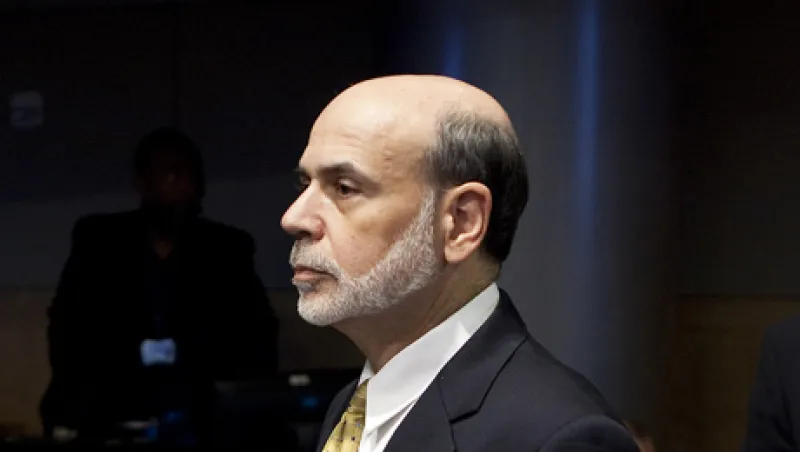For most large investors with a balanced portfolio, last week’s sharp drop in the US stock market brought one consolation: a rise in the value of American government bonds, as a flight to safety pushed down long-dated yields. But for the U.S.’s beleaguered pension funds this was a further twist of the knife in the wound.
The S&P 500 dropped 6.6 percent, as investors rushed into less risky investments. With even gold tumbling, US Treasuries were the number one haven for many. The announcement of Operation Twist – the US government’s plan to cut long-term interest rates by buying longer-dated Treasuries – lowered yields yet further. As a result the rate on the 10-year tumbled to a mere 1.83 percent – down 24 basis points on the week and 44bp on the month.
This brought scant comfort to US pension funds. True, the fall in yields boosted the value of their holdings of long-dated Treasuries. But there was a catch – the further long-dated US bond yields slid, the wider the funding gap for defined benefit schemes.
The key to this is the discount rate used to calculate the present value of pension funds’ future liabilities. The lower the rate, the higher their present value. The measure is commonly based on the yield of long-dated investment-grade US corporate bonds – which usually follows the direction of Treasury yields. Last week discount rates fell yet more – further boosting the value of liabilities.
Using end-August figures, Milliman, the consultancy, has calculated that the largest US companies’ pension assets were worth only 79 percent of liabilities, because of the twin problems of weak equity markets and declining interest rates. The figure is likely to be even lower now, following further falls in equities and in bond yields – Credit Suisse has estimated that a 25bp drop in the discount rate increases large corporate funds’ liabilities by $45bn. US companies rated by Standard & Poor’s used a discount rate of 5.34 percent in 2010, 51bp lower than the 2009 average. Analysts estimate that this year it has fallen by at least another 50 basis points.
Faced with this double trouble, how can pension funds respond? One possibility is to hunt for alpha in US equities– beating the S&P 500 by aggressive stock-picking based on analysis of corporate fundamentals. Another is to seek solace in overseas stock markets.
Unfortunately, analysts say modern trading patterns may make both tactics less likely to succeed. Individual US stocks currently show extremely high correlation with each other. National stock markets are also increasingly prone to move in lockstep with global trends.
Another possibility is to increase reliance on hedge funds. However, this is no panacea. During the turbulence of 2008 the ‘hedge’ in ‘hedge funds’, which is supposed to deliver absolute returns even during market turmoil, proved illusory, with the average fund dropping by 19 percent. Hedge funds trying to buck the market face many of the same problems as other investors. Their classic tactic of long-shorting stock pairs is harder when a market’s equities are so highly correlated with each other. Funds’ macro strategies that involve betting on one market and against the other are trickier when so many markets are moving in unison.
There is, at least, one correlation that’s holding up: falls in stocks and the downward mood of pension fund managers.






